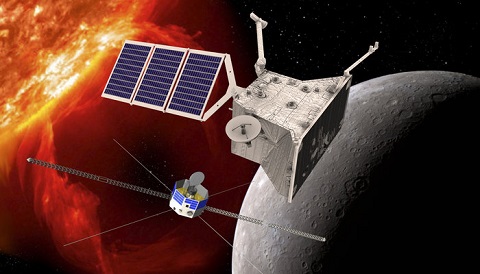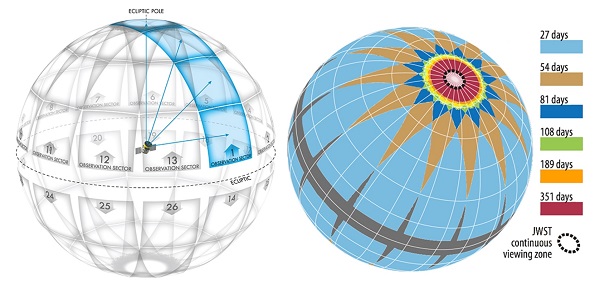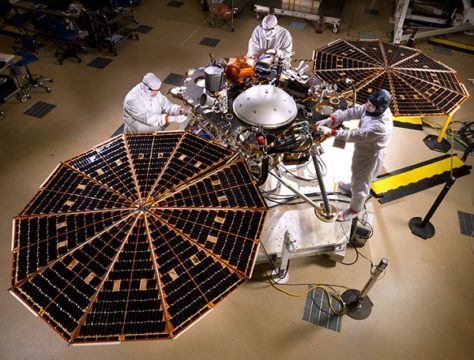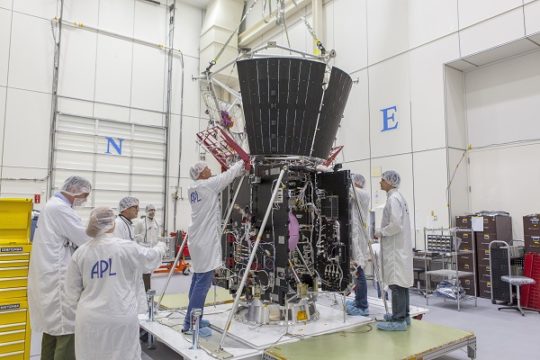This year will see new space missions headed to Mars, Mercury, the Sun, and more.

ESA
Yesterday's launch of a Zenit-3F rocket from the Baikonur Cosmodrome in Kazakhstan carried AngoSat, Angola's first communications satellite — unremarkable but for marking the last of 85 scheduled launches in 2017.
No new planetary missions departed Earth in 2017, but Juno continued to explore Jupiter, Cassini wrapped up its mission at Saturn in a dramatic Grand Finale, and the current U.S. administration pivoted the focus of NASA's human space exploration once again.
A mission roll call for 2018 reads a lot like our list of space exploration and science missions to watch in 2017, as some launch windows slipped into the next calendar year. But that's space exploration for you. Here are space and science exploration missions to watch for in 2018.
Space Missions in 2018
ICON: NASA's Ionospheric Connection Explorer was delayed from 2017, but should launch in the first half of 2018. ICON will probe the interface between Earth's ionospheric and terrestrial weather and space weather. Understanding the interaction between these regions is crucial, as space weather events can trigger GPS errors and radio blackouts. ICON will launch on a Pegasus XL rocket carried aloft by an L-1011 aircraft flying out of Kwajalein Atoll in the Pacific.
Chandrayaan 2: Set to launch in March 2018, Chandrayaan 2 (meaning “Moon vehicle” in Sanskrit) will be India's second Moon mission. It consists of an orbiter, lander, and rover, similar to China's Yutu (Jade Rabbit) rover and lander. Chandrayaan 2's soft lunar landing will be a first for India.
TESS: This is one to watch. Set to launch no earlier than March 2018, NASA's Transiting Exoplanet Survey Satellite (TESS) will, like Kepler, watch for tiny dips in a star's brightness as an exoplanet creeps across its line of sight. But unlike Kepler, which gazed at a small patch of sky, TESS will survey nearly the entire celestial sphere over a two-year period.
TESS also differs from Kepler in that it will target smaller, rocky worlds around bright, nearby stars. Many of these belong to the red dwarf class, which means that their habitable zones are much closer in than around Sun-like stars. Because the planets TESS discovers are nearby, they'll be well suited for follow-up observations, such as by the James Webb Space Telescope, expected to launch in 2019.

MIT / TESS
Mars InSight: NASA's Mars Insight (Interior exploration using Seismic Investigations, Geodesy and Heat Transport) is the only mission headed to the Red Planet in the upcoming 2018 launch window. It's slated for an early morning liftoff on May 5th from Vandenberg Air Force Base, California. The lander is headed for Elysium Planitia, where it will land on November 26, 2018.
InSight is built around the same heritage design as the Mars Phoenix Lander. A vacuum leak on the Seismic Experiment for Interior Structure (SEIS) instrument led to a delay for Mars InSight from the 2016 to the 2018 launch window.

NASA / JPL-Caltech / Lockheed Martin
Aeolus: In mid-2018, the European Space Agency will launch the Earth-observing satellite Aeolus. Although weather forecasting has markedly improved over the past decade, one key missing element that meteorologists would love to have is real time wind profile data. Aeolus will fill that gap, delivering wind profiles globally on a daily basis in near real-time.

NASA
The Parker Solar Probe: Scheduled to launch from Cape Canaveral on July 31, 2018, NASA's Parker Solar Probe is billed as the “mission that will touch the Sun.” Designed to study the outer solar corona, the probe will pass just 3.7 million miles (13% of Mercury's perihelion distance) from the Sun's dazzling photosphere, or visible surface. The Parker Solar Probe is expected to reach a speed of 200 kilometers (124 miles) per second relative to the Sun, making it the fastest spacecraft on record.
Chang'e lunar missions: While China's plans for space exploration remain in flux, the nation's emerging space program has set its sights on the Moon. China plans to launch the Chang'e-4 relay lunar orbiter at the end of 2018. A lander or rover will launch roughly six months later (in 2019), followed by the first-ever automated landing on the far side of the Moon. (All lunar missions throughout the Space Age — including the Apollo missions — have landed on the Earthward side of the Moon.) Another possible mission for 2018 or 2019 is Chang'e-5, the first lunar sample return mission since 1976.
Also keep an eye out for the reentry of China's first space station Tiangong-1 during the first quarter of 2018, and the launch of the core stage for China's first modular space station next year.
BepiColombo: The flagship planetary mission for the European Space Agency and Japanese Aerospace Exploration Agency in 2018, BepiColombo will launch next October for Mercury. The spacecraft will reach orbit around Mercury in December 2025, after multiple flybys of Earth, Venus and Mercury.
The mission actually has two free-flying orbiters: the Mercury Magnetospheric Orbiter and the Mercury Planetary Orbiter. They will map the magnetic field of Mercury, similar to what NASA's GRAIL mission did for the Moon. Unfortunately, early design plans for a first-ever Mercury lander and rover were dropped due to budget constraints.
SpaceX in 2018: The long-awaited launch of SpaceX's Falcon Heavy rocket from the Kennedy Space Center, along with a Tesla Roadster as its inaugural payload (!) may just be weeks away in early January 2018. The Falcon Heavy is essential for SpaceX's hinted-at crewed flight around the Moon for late 2018. Although it's a lofty goal, we might just see the first crewed Dragon flights by year's end.
2018 Mission Highlights
Meanwhile in deep space, NASA's Osiris-REX and JAXA's Hayabusa-2 missions both reach their respective asteroid targets in 2018: 101955 Bennu (August 2018) for Osiris-REX and 162173 Ryugu (June 2018) for Hayabusa-2.
Hayabusa-2 will take its asteroid sample and depart its target by December 2018, while Osiris-REX will move at a more leisurely pace, heading back for Earth with its own sample in March 2021.
NASA's Juno mission is expected to wrap up at Jupiter in July 2018, with a fiery plunge into the giant planet's atmosphere. This will mark a bitter-sweet milestone, with no spacecraft orbiting the outer planets for the first time since Galileo's arrival at Saturn in 1995.
2019 . . . and Beyond
Looking ahead to 2019, we'll ring in New Year's Day just over a year from now with New Horizon's flyby of Kuiper Belt Object 2014 MU69. NASA's Space Launch Systems (SLS) heavy lift rocket should make its inaugural launch, and the James Webb Space Telescope should (finally!) make its way to space.
In the meantime, get set for another exciting year of space exploration.
 0
0
Comments
You must be logged in to post a comment.